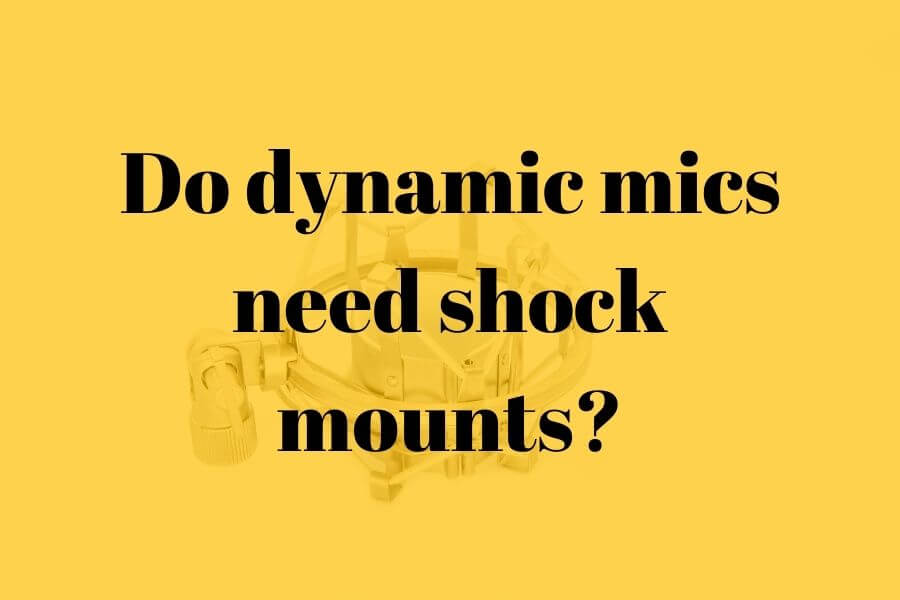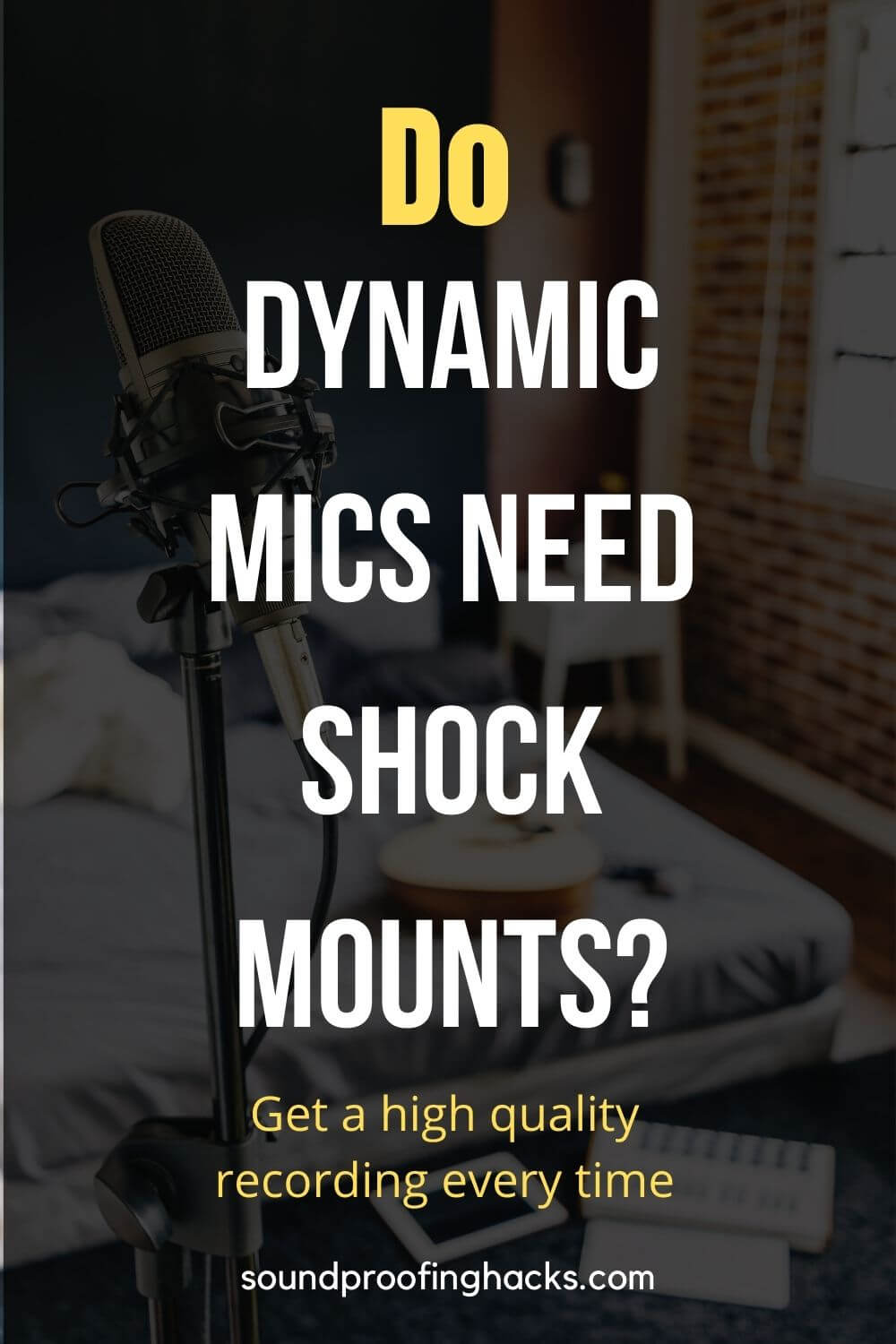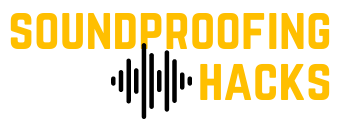Do dynamic mics need shock mounts? It might not be what you think
Having a home studio for recording is mighty fun, yet it also throws up lots of questions especially for newbies. The microphone is one of the most important piece of equipment in the studio and we all want to maximize its usefulness and effectiveness. This brings us to a commonly asked question: Do dynamic mics need shock mounts?
Whenever possible, you should use a shock mount with a dynamic microphone or any other microphone. This is done so that all manners of noise and vibration can be reduced, thus improving the quality of the sounds picked up by the microphone. Accidental or unnoticed noises can then be eliminated.
This article will address more in detail about using shock mounts for dynamic microphones and more. Read on to find out more!
I am an Affiliate for Amazon and other merchants, which means I may make a commission if you purchase something through the links here. There is NO extra cost to you at all, and THANK YOU so much for the support. Learn more here.
Contents: Skip to section

What is a dynamic microphone?
We use microphones to turn sound waves into electric waves so that they make sense for the recording device we are using or the computers that stores and manages them.
A dynamic microphone is mainly used for capturing louder sounds, such as sounds from drums, and vocals. They are typically priced quite cheaply and they not require a power source to operate. However, they are not so good at picking up high frequency sounds.
As sound hits the diaphragm of a dynamic microphone, it is then passed on to a coil which moves up and down to produce a small AC current, our electric signal.
The coil is not sensitive to low and high frequency sounds, so if you are using a dynamic microphone in a studio trying to capture the finer points of your vocals, you might be using the wrong equipment.
Check this out too: 11 Best Audacity Plugins: Free and Paid
What is a microphone shock mount?
A microphone shock mount is basically a device in which you can clip your microphone to and mount it to a boom arm or a microphone stand. The device can reduce vibrations caused by structure borne noise such as someone walking by, vibrations outside the room, natural factors such as wind, or even a cable that was moved.
Think of it like having a suspension for your microphone. Since these noises and vibrations are reduced or removed, you avoid them ruining your recording.
Tip: by using a low cut filter, you can also remove the rumble in your recordings.
Consequences of not using a shock mount
No, you will not risk your physical health or lose a ton of money if you don’t use a shock mount, but in my opinion, it is totally worth using one so that the chances of a recording getting ruined is reduced dramatically.
You know very well that no recordings are the same and when you get that perfect one, you want it to stick. By investing in a shock mount, you can be sure that you will not experience any hair pulling exercise after recording.
Jokes aside. Just think about this. When you or the singer you are recording is really into it, you tend to move around, maybe just swaying to the music. That very simple act can trigger vibrations on the floor (possibly wooden floor?) and travel up to your microphone. See what I mean?
The last thing you want is for the singer to have a great session and it turns out the recording is unusable.
Check this out too: Samson Q2U vs Blue Yeti comparison: Which suits you best?
How to mount a microphone to a mic stand?
Typically, there are 2 ways you can go about mounting a microphone to a stand.
The usual way is to utilise a hard clip. This clip is fastened onto the mic stand, and you either slip the mic in or you can screw it onto the clip. Take note that in this method of mounting, there is no separation between the stand, floor, and the mic.
Another way to mount a microphone to a mic stand is to make use of a shock mount. Similarly, the shock mount is fastened to the mic stand by screwing it in to an adaptor. This can be used on boom arms as well.
You can need to insert your mic to the shock mount. Usually, there will be 2 clips which you squeeze together to make space for the mic. Once the mic is in a position you want, you release it. Now, it is held within the shock mount in a “basket”, which does the ultimate job of reducing vibrations. Voila!

When should you use a shock mount?
If you have been checking or asking around, you might have received different answers. For me, I really think there is no harm in using a shock mount at all. Of course, life still goes on without one, but if you really want to insist on quality recordings, a shock mount makes perfect sense.
Here are some potential scenarios that could convince you to use one.
Accidental hits
Lets say you are only recording a singer or yourself, you cannot be sure that you will not make any movements at all while doing so. I mean, can you really sing by standing there like a block of wood? I know I can’t.
This also means that any accidental hits, such as tapping of your feet, touching the mic stand, or just regular movements will impact the microphone. The diaphragm will pick up conflicting sounds, leading to a degradation of your recording.
Even podcasters are turning to using shock mounts to ensure they can get clear and crisp recordings. The name of the game now is high quality!
Recording with a band
If you are just recording solo without any musical instruments, you could probably get away without a shock mount. But in the event you are jamming with a bunch of friends or your band mates, can you imagine the amount of vibrations that will be picked up by the microphone?
Making things worse would be if the ground is wooden or hollow, which just amplifies everything. Every drum hit, every step that someone takes, or every dance move someone is making. All distractions to the quality of the recording.
Read this too: Rode Procaster vs Shure MV7: Which Comes Up Tops?
What types of microphones need to use shock mounts?
In general, there are two types of microphones that you will be using, either a dynamic mic or a condenser mic.
When it comes to dynamic mics, you can say that they are more “roughly: built, making them pretty sturdy. There are no complicated internal parts that run the risks of getting damaged too easily. And as we have discussed above, you should still use a shock mount for dynamic mics to ensure the best quality recording you can get.
When it comes to condenser mics though, the story is different. You almost certainly need to use a shock mount for the same reasons as for a dynamic mic. But beyond that, you should also know that a condenser mic has very delicate internal circuitry which can easily be damaged. Knowing that the mics themselves don’t necessarily come cheap, I’m pretty sure you want to protect it and keep it shock free.
What is mechanical sound transmission?
I thought it might be useful to talk a little about mechanical sound transmission which I think sometimes get forgotten when it comes to musicians or recording artists.
What it means is simply the transference of sound from one element to another within a building. Ever heard footsteps from elsewhere in the building? Ever heard the sound of doors slamming shut? Those are mechanical sound transmissions.
And as you can imagine, these factors are frequently out of our control. When we are recording in our studios, can we say for certain that we can stop all these noises from entering? I guess not. You should have this important theory in your mind when you are recording the next time, and it also adds weight to the importance of shock mounts.
Types of shock mounts
Dynamic microphones do not come with a shock mount for good reason. They are generally thought of as lower cost microphones compared to condenser microphones.
On the other hand, higher grade (or premium) condenser microphones will always come with shock mounts.
So if your mic does not come with one, what kind of shock mount should you buy?
You can either check with the manufacturer if they make one for your microphone model, or you can consider using a universal microphone shock mount instead. The way I look at it, both types are highly beneficial and most of the time, you can do very well with a universal one.
Before you spend your hard earned money, here are some important factors you should consider when getting one:
Compatibility: Obviously, you need one that fits your microphone. Check out the sizing chart and measure your mic if you have to. Think about the shape and size you need. Lastly, do you see yourself changing your mic within the short term? Try getting one that suits your needs.
Durability: Shock mount prices can vary quite a bit and it is not surprising. You can find some really cheap ones that’s like less than $15, but if I were you, I rather get one that can last. There are elastics in shock mounts, and can you trust a cheap device to maintain the elasticity after a few uses?
Best microphone shock mounts
I prefer to stick to tried and tested models, and the following 3 are ones that I have personally used or comes highly recommended by fellow home recording enthusiasts. In fact, don’t be surprised if you see these models mentioned in other websites too. I think that speaks highly to the fact that they are well liked and in demand.

- Rotates 360 degrees with a maximum reach of 820mm (32.5 inches) horizontally and 840mm (33 inches) vertically
- 3/8 inch thread adaptor
- Holds up to 2Kg (4.4lbs)
- Does not need any nut/ washer or bolt. The open end of the shock mount is to be directly screwed onto the mic stand

- Universal studio microphone shock mount designed to securely hold lighter Large Diaphragm Condenser (LDC) mics from 18 to 55mm in diameter
- Ideal for mics weighing 400g or less, including: AKG C414, Neumann TLM 102 & 103.
- Unique, industry-leading design with Rycote patented, vibration-resistant Lyre technology
- No elasticated parts, so never sags or needs rethreading
- Up to twice the isolation performance of traditional microphone suspension systems.Manufactured from composite Hytrel material making it virtually indestructible

- Rycote InVision INV-HG mkIII Microphone Suspension - Lyre Shockmount - 3/8" to 5/8" Microphone Stand Adapter - Original Box
- Large Lyre Suspension for Boom Operation
- 19 to 34mm Mounting Cradle
- Hytrel Construction
- Integrated 3/8" Threaded Base with 5/8" Stand Adapter
Thanks for reading till the end. Soundproofing Hacks is supported by users like yourself. If you found our content useful, consider buying us a coffee here. It goes a long way in keeping our doors open. Thank you.
In conclusion: Dynamic mic shock mounts
As you can see, the benefits of using a shock mount for your dynamic mic (or condenser mic) far outweighs not using them. The investment cost is relatively low and a good quality shock mount like the ones mentioned above can last a long time.
Next time you are going into your studio for recording, will you be utilizing one? I sure hope so and I hope you get the results you deserve!
Other articles that might interest you:
- Can I use a bookshelf speaker as center channel?
- Focusrite Scarlett 2i2 Vs 2i4: Which audio interface is better for you?
- RODE Procaster vs Shure SM7B – Which should you choose?
- How to reduce keyboard noise on mic? 6 practical tips that work

